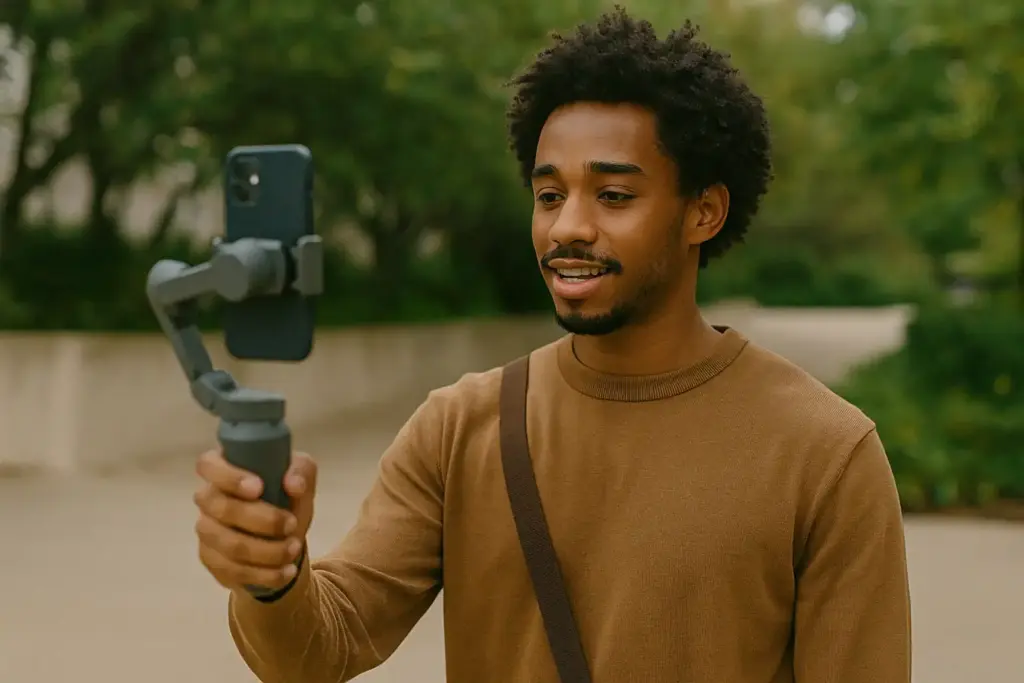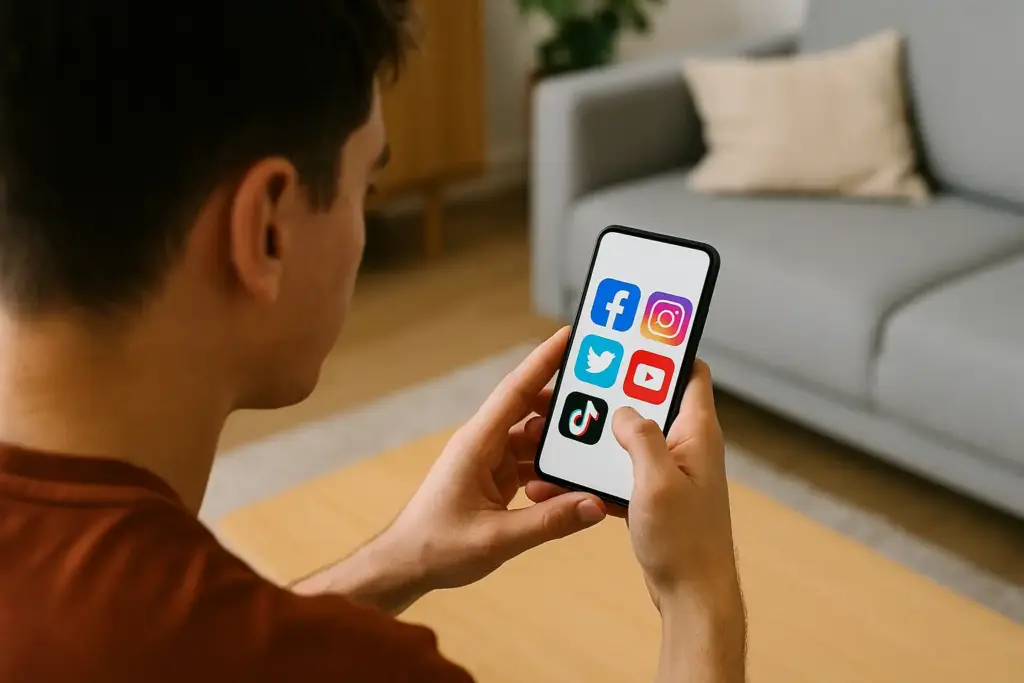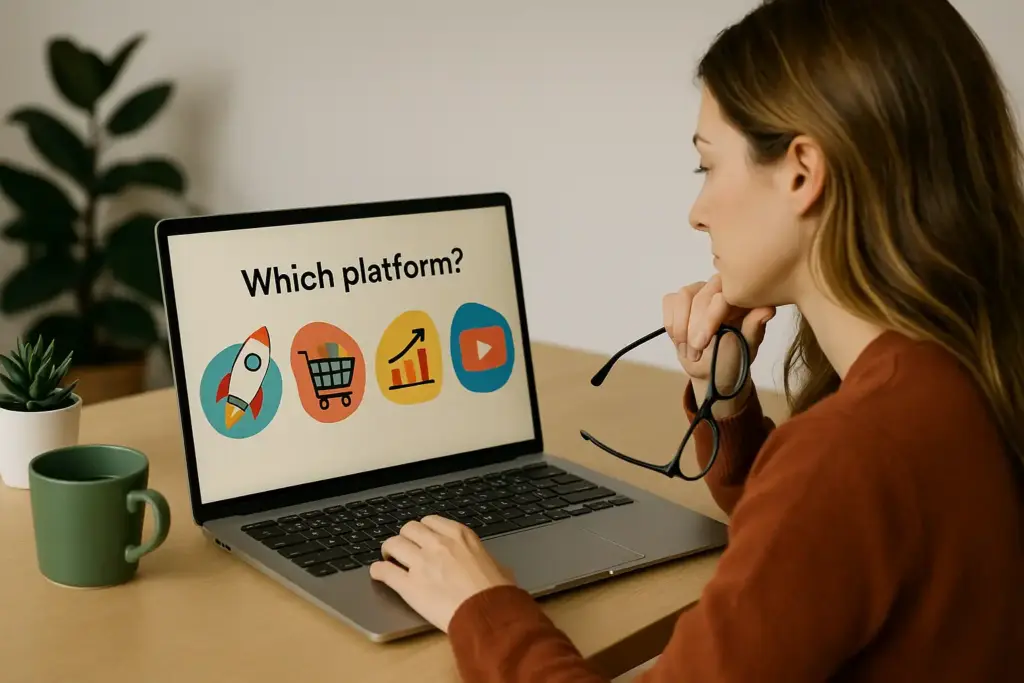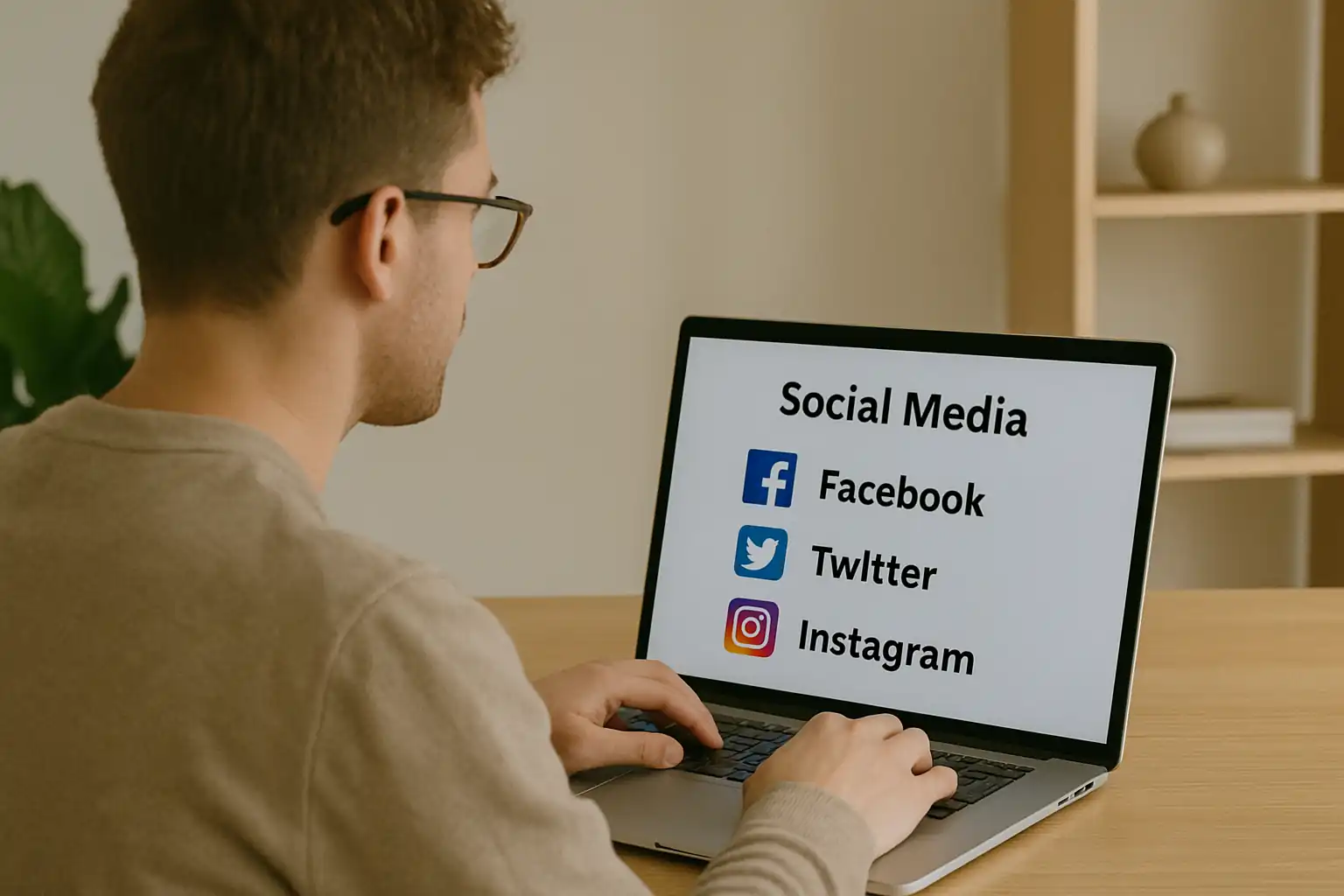Top Social Media Platforms for Business Growth in 2025
If you’re unsure where to spend your time on social media in 2025, you’re in the right place.
We’ve helped dozens of businesses sharpen their online presence, grow followings, and turn attention into sales. Without needing to be on every platform. From Facebook and LinkedIn to TikTok and newer channels, we’ve seen what actually works through hands-on experience.
This guide covers:
- The best social media for business this year
- Smarter ways to manage your time and content
- Tips to connect with your target audience using content that feels human
Social media now drives visibility, reputation, and relationships. It helps you attract new customers, deliver real value, and shape how people see your brand. But picking the right channels and keeping up with social media content can get overwhelming quickly.
We’ll break it down step by step so you can focus, show up better, and grow with confidence. First, start with knowing about the most popular social media platforms.

Best Social Media for Business
Choosing the right social media platform starts with knowing what each one helps you do best. Let’s know more..
- Facebook continues to lead with over 3 billion monthly active users. It works well for building communities and keeping your business visible in people’s everyday lives. Many brands use it to stay top of mind between purchases by posting helpful updates or running ads that feel familiar.
- Instagram is strong for lifestyle brands. It has over 2 billion active users, mostly under 35. This platform rewards visual content and personal moments. If your product photographs well or your story is worth sharing, Instagram makes that connection feel natural.
- LinkedIn is all about trust and credibility. With 310 million monthly users, it focuses on professional content that helps others learn or make decisions. It’s great for consultants, B2B providers, or service brands looking to build authority.
- YouTube is built for entertainment and both long and short videos. Over 2.5 billion people use it monthly. Long-form content here keeps working long after it’s published. If you create how-tos or product explainers, this platform helps build traffic and trust at the same time.
- TikTok now draws more than 1.5 billion users each month. It suits businesses that are willing to be real and creative. Even small brands can gain traction quickly here by sharing simple ideas with personality.
- X, formerly Twitter, is for fast conversations. Around 611 million people use it monthly. It helps you join trending topics or share smart takes. If your brand has a clear voice, this platform gives it room to grow.
Each of these platforms supports a different kind of connection. Focus on where your audience spends time and where you enjoy showing up. That’s the start of a social media strategy you’ll actually want to stick with.
Platform-Specific Content Creation Ideas
One of the biggest mistakes we see is trying to post the same thing everywhere. It’s like wearing the same outfit to the gym, a wedding, and a job interview. Based on our past experiences helping small teams manage their content, what matters most is matching your style to where you’re sharing it.
Let’s walk through five major platforms and what actually works on each.
TikTok
TikTok is best for sharing informal videos, like DIY videos. TikTok works when things feel easy, casual, and a bit off-the-cuff. We’ve seen brands grow by keeping things light, even with very simple videos. So, what’s the trick to dominate this platform?
Try sharing:
- A packing clip with a trending sound in the background
- A 10-second “before and after” moment that shows progress
- A fast answer to a question you get asked all the time
- A moment from your day that makes people smile or nod
Drawing from our experience, the best short videos feel like something you’d send a friend.
Instagram is better for sharing moments. It’s where people decide if you’re someone they want to follow or buy from. A fancy setup like YouTube is nothing but a waste here. All you need to do is share moments that feel genuine and look clean.
Post things like:
- A Reel showing your product in use with a soft, personal caption
- A carousel that breaks down a simple how-to
- A behind-the-scenes photo with a quick note about your day
- A poll or question sticker in your Stories to ask what people think
Based on our firsthand experience, visual content that invites a small interaction tends to work best here.

LinkedIn is the go-to place if you want to uphold your professional expertise. If Instagram is your shop window, LinkedIn is your meeting room. People here want to learn, connect, and understand what makes you good at what you do. It’s less about volume, more about showing up with something honest to say. LinkedIn is sort of like a professional place, so you shouldn’t put extremely informal videos here.
Some ideas:
- A short story about a mistake and what it taught you
- A client result with one takeaway that others can apply
- A note about how you’ve changed your process and why
- A post that reflects on what’s changing in your industry
Through our hands-on experience, thoughtful posts like these bring in messages, not just likes.
X (formerly Twitter)
We recommend X for keeping pace with the fast-moving world. It moves fast, but if you say something smart or helpful, people notice. You don’t need to post constantly. Just consistently, with a clear voice.
Post these ideas for a better outcome:
- A 3-tweet thread breaking down something you’ve learned
- A comment on a trending topic, paired with your take
- A quick “did you know?” followed by a tip or stat
- A link to your blog or article with one line that adds value
We determined through our tests that tweeting a few times a week builds steady attention over time.
YouTube
YouTube is where people stop scrolling and actually watch. It’s for helping, explaining, and showing how things work. You don’t need a studio. Just a clear idea, a steady camera, and something useful to say is enough to start.
Try filming:
- A simple “here’s how we do it” walk-through from your workspace
- A comparison between two tools or approaches, based on what you’ve used
- A 5-minute tip list that solves a small but annoying problem
- A video answering a real customer’s question with clear steps
Our analysis has shown that this kind of video content keeps bringing in new viewers long after it’s posted.
Social Media Channels You Might Be Overlooking
It’s easy to stay focused on the big names. But sometimes, your best audience isn’t where the spotlight is. Based on our past experiences working with smaller brands, we’ve seen real traction come from lesser-known platforms that feel more personal and less crowded.

Here are three worth exploring.
Reddit is a network of conversations happening around almost any topic you can think of. As of late 2024, Reddit had 97.2 million daily active users. That’s a lot of people who are already in research or opinion-sharing mode.
You can try these things to make real progress:
- A post in a niche subreddit to share honest advice or experience
- Following threads where people ask for recommendations in your space
- Hosting an AMA (Ask Me Anything) to connect directly with curious users
We’ve seen small skincare brands answer questions in beauty forums and walk away with dozens of new followers. People trust real answers from those who’ve done the work. If you can give without pushing, this space listens.
Discord
Discord started with gamers, but now it’s where all kinds of communities come together. It has grown far beyond gaming because of its uniqueness. Private servers, topic-based channels, and real-time chat make it feel more personal and interactive than most platforms. As of 2024, it supports over 196 million monthly users and is used by creators, educators, and even SaaS brands to build tight-knit groups.
Try these strategies to utilize this platform effectively:
- Create a private server for customers to ask questions or swap ideas
- Host a live Q&A or demo session for your community
- Share updates and get feedback quickly in a place that feels more direct
We helped a coaching business set up a simple Discord server. Within weeks, their clients were answering each other’s questions. That level of trust and self-sustaining value is hard to build anywhere else.
Threads
Threads, built by Meta, reached 275 million monthly users by late 2024. It’s focused on conversations, short, real ones and it’s still early enough to stand out.
You might use it to:
- Share quick takes or thoughts while working through ideas
- Ask your audience simple, direct questions to start engagement
- Post reactions or summaries during live events
One fitness coach we worked with started sharing daily thoughts on Threads. Not workouts we repeat, thoughts. Over time, people replied more to those posts than to any top-notch video. Sometimes, honesty beats editing. Proved!
Smarter Use of Multiple Platforms Without Burning Out
Alex runs a small team with limited time and big goals. At first, they tried to post on Instagram, TikTok, X, and YouTube all at once. The idea was to reach more people. But within weeks, they were burned out, and the results were scattered. Nothing was sticking.
After putting it to the test, they made one change. Instead of creating new content for every platform, they focused on one strong idea each week and used that across the board.
Here’s how it looked:
- Monday: A customer tip shared as a LinkedIn post
- Tuesday: The same tip turned into a 15-second Reel for Instagram
- Thursday: A follow-up thread on X, using real examples
- Friday: A quick “how we use this tip” walkthrough on YouTube Shorts
This simple change gave every piece of content more reach. It also reduced the mental load.

We’ve helped brands take this same approach. One idea, one message, just told in different shapes. Based on our firsthand experience, this kind of content reuse doesn’t just save time. It also helps your brand sound like one clear voice.
You don’t need to be everywhere to make an impact. You need to be present where it counts.
Social Media Apps and Tools to Make It Easier
Do you need every tool out there? No. But you do need the right ones. The kind that actually saves time and keeps things moving when life gets busy. Through our practical knowledge working with solo founders and small teams, we’ve found that these tools are the ones people tend to stick with.
Here’s what we recommend starting with:
- Canva (Free + Paid)
If you’ve ever struggled with making your content look “right,” Canva helps. It gives you templates for Reels, Stories, thumbnails, and more. No design skills needed. You can also set your brand colours and fonts so everything stays consistent. - Buffer (Free + Paid)
A good tool if you want to batch your content and not worry about it every day. Buffer lets you schedule posts for different platforms at once. It gives a simple view of what’s coming up next. It’s especially helpful if you post regularly but don’t want to be online all the time. - Later (Free + Paid)
This one’s built for visual planners. You can drag your Instagram posts into a calendar and see how they’ll look on your grid. It also supports TikTok and Pinterest. It even reminds you when it’s time to post if you prefer manual sharing. - Notion (Free + Paid)
Think of Notion as a home base for your content strategy. It’s where you can store ideas, write captions, and plan out your content calendar all in one spot. We’ve worked with teams who’ve built their entire monthly marketing schedule here. - ChatGPT (Free + Paid)
When you’re stuck on a hook, caption, or headline, this tool helps you get moving again. Our team discovered through using this tool that it works best as a starting point. Give it a rough idea, and you’ll often get something useful back. Just remember to edit with your voice in mind. - Hootsuite (Paid)
If you’re managing content for multiple brands or accounts, Hootsuite gives you control. It combines scheduling, monitoring, and reporting into one platform. Though pricier, it’s ideal for agencies or in-house teams that need oversight without switching between tools.
Pick one tool that helps you plan. One that helps you post. And one that helps you design. That’s usually enough to get started without overwhelm.
Marketing Strategy Comes First
It’s hilarious to start with content ideas and jump straight into posting. But without a clear goal, it’s easy to waste time or show up in the wrong way. From our firsthand experience helping businesses improve their results, we’ve found that strategy gives content a purpose.
Start by asking a simple question: What do you want your content to do?
If you’re looking to bring in leads, LinkedIn might be your best fit. That’s where decision-makers scroll with intention. If your goal is to raise awareness for a physical product, Instagram and TikTok help with reach and visual storytelling. If you’re educating or building authority, YouTube is a smart long-term play.
Here’s how that might look:
- A fitness coach could post daily tips on TikTok to attract attention, then link to a YouTube video that builds trust through deeper education.
- A small B2B tech firm might post behind-the-scenes content on LinkedIn, showing how their team solves real-world problems.
- A local bakery could use Instagram Stories and short Reels to show off new items and drive foot traffic.

Once you’ve picked your goal and platform, focus your message. This is where things become more consistent. A wrong message can ruin all your efforts. And, it can turn into unbearable pain.
Now track what matters. Look at website clicks, replies or messages, time spent watching videos, or how many people follow through on your call to action. You don’t need a dashboard full of data. Just keep an eye on what shows progress.
A good strategy doesn’t make things rigid. It gives your content a job to do, so it works even when you’re not online.
Picking the Right Platform: Final Thoughts
There’s no perfect platform. Just the one that fits you best.
Pick the places where your audience already spends time. Share things that feel honest. And give yourself space to figure it out as you go. We’ve helped clients do more with less by leaning into what works and letting go of what doesn’t.
Over time, we found that the strongest results often come from simplicity. One clear message. One good platform. And showing up with something useful.
If you’re thinking through your next steps, take a look at Westport Osprey. We share guides and ideas built for real businesses that want to grow online and stay grounded.


Leave a Reply